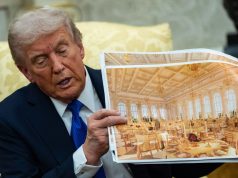
President Donald Trump wants a “manufacturing renaissance” for the American economy. No more making iPhones in China or cars in Mexico: The president expects those jobs and factories to come “roaring back into our country.” Some observers wonder if his policy overly romanticizes manufacturing jobs, or if those jobs can be filled.
Skeptics say Trump’s tariff-driven efforts to bring manufacturing home might be “more about nostalgia or political pandering” than what is best for workers, said NPR’s Planet Money. Actually, the manufacturing sector “punches above its weight.” One study found that manufacturing employs just 10% of Americans, but provides 20% of the country’s “good jobs” that pay well regardless of a worker’s educational background. But that doesn’t necessarily make Trump’s policy correct. “I think we’ve developed a kind of collective fetish” for manufacturing jobs, said Harvard University economist Gordon Hanson.
What did the commentators say?
Even when the jobs are good, it is not clear who will work them. “Companies are struggling to fill” more than 450,000 open manufacturing jobs across the country, said The Washington Post. The problem will get worse as American workers get older. The aging workforce has “long been a challenge for us,” said Carolyn Lee, president of the Manufacturing Institute.
Nostalgia for the golden age of American manufacturing “will make the U.S. poorer,” said Tej Parikh at the Financial Times. The “allure” of bringing back that age is “clear,” but backing Trump’s trade wars requires a belief that “America can, and should, bring back labor-intensive factory jobs.” In truth, American manufacturing output has increased in recent decades even as the number of jobs dropped, and the U.S. is already a “manufacturing superpower.” Creating even more factories and factory jobs will be “hard, undesirable and difficult to achieve with tariffs.”
American companies are having trouble filling those jobs, but “not because of trade policy,” said Allysia Finley at The Wall Street Journal. While “productivity-enhancing technology” and “inexpensive imports” once caused a loss of manufacturing jobs, the generation that suffered those losses is “sailing into the sunset.” Right now there are “fewer young Americans who want to work in factories” because they do not want to do “jobs they view as beneath them.” It is time to remind Americans that there is “dignity in any work.”
What next?
Trump’s tariffs “won’t bring manufacturing back,” said Business Insider. That is based on a Wells Fargo analysis that found “high labor costs and a lack of workers” would make reviving factory jobs an “uphill battle.” American companies would have to spend $2.9 trillion to bring manufacturing employment back to 1979 levels. The president’s trade wars aim to “spur a durable rebound in U.S. manufacturing employment,” said the Wells Fargo report. But a “meaningful increase” in that employment “does not appear likely in the foreseeable future.”
The jobs are good. The workers may not be there.






